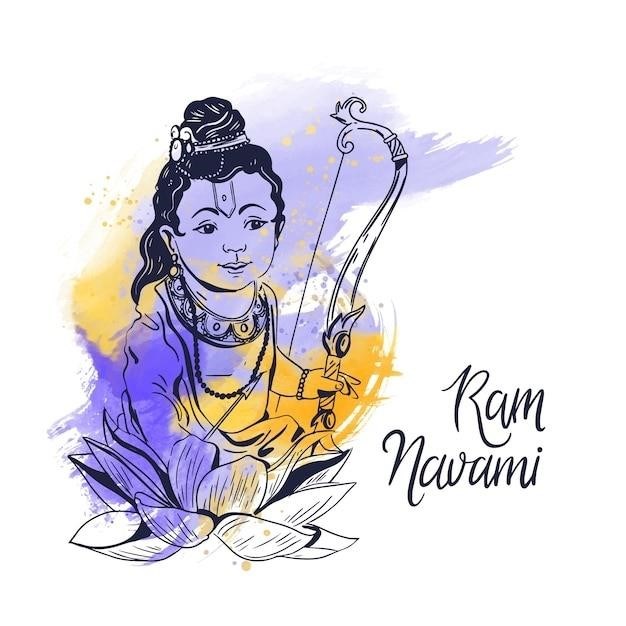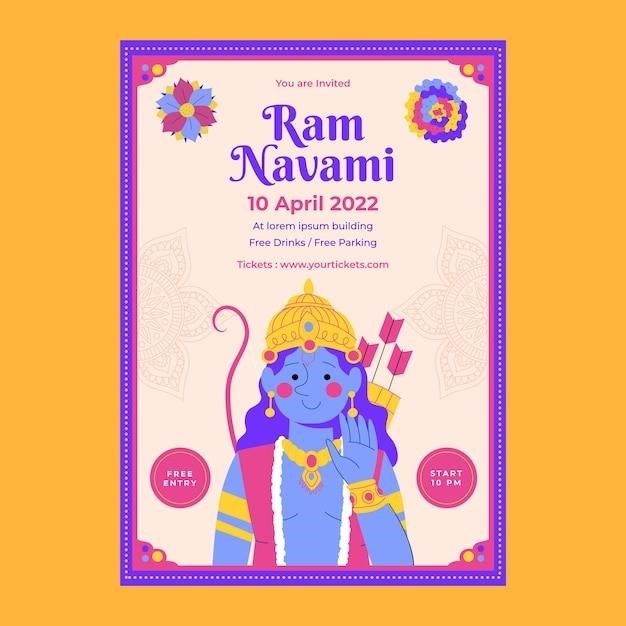Hanuman Chalisa in Tamil
The Hanuman Chalisa in Tamil is a popular Hindu devotional hymn dedicated to Lord Hanuman. It consists of 40 verses filled with praises for Lord Hanuman, composed in Awadhi, a dialect of Hindi spoken in Ayodhya, Lord Rama’s birthplace. The Chalisa is a compilation of forty poems or Chalis chaupayis meaning forty quatrain verses. The recitation of the Chaupayis begins and ends with a Doha (couplet).
Introduction
The Hanuman Chalisa, a revered Hindu devotional hymn dedicated to Lord Hanuman, enjoys immense popularity across India and among devotees worldwide. This powerful chant, composed by the esteemed poet Sant Tulsidas in the 16th century, is a testament to the unwavering faith and devotion of Hindus towards Lord Hanuman. The Hanuman Chalisa, with its profound lyrics and profound meaning, has been a source of solace, strength, and inspiration for countless individuals for centuries.
The Hanuman Chalisa is not merely a collection of verses but a powerful mantra that is believed to invoke the blessings of Lord Hanuman. It is believed to possess the power to overcome obstacles, grant protection, and bestow spiritual enlightenment. The recitation of the Hanuman Chalisa is a spiritual practice that can be performed by individuals of all backgrounds and belief systems, as its message of devotion and surrender transcends religious boundaries.
In recent years, the Hanuman Chalisa has gained immense popularity in Tamil Nadu, a state in southern India known for its rich cultural heritage and deep spiritual roots. The translation of the Hanuman Chalisa into Tamil has made it accessible to a wider audience, allowing devotees to connect with its profound message in their native language.
History and Significance
The Hanuman Chalisa, a timeless hymn dedicated to Lord Hanuman, is deeply rooted in Hindu mythology and tradition. It is believed to have been composed by the renowned poet and devotee Sant Tulsidas in the 16th century. Tulsidas, known for his profound devotion to Lord Rama, penned the Hanuman Chalisa as a tribute to the divine monkey god, who played a pivotal role in the epic Ramayana.
The Hanuman Chalisa holds immense significance in Hindu culture, as it embodies the virtues of strength, courage, devotion, and unwavering faith. Lord Hanuman, revered as the embodiment of these qualities, is believed to be a powerful protector and a divine messenger. The Chalisa is a powerful tool for invoking his blessings and seeking his guidance.
The Hanuman Chalisa is recited daily by millions of Hindus across the globe, seeking spiritual solace, protection from adversity, and the fulfillment of their desires. It is believed to have the power to dispel negativity, overcome obstacles, and bring about peace and harmony in one’s life. The recitation of the Hanuman Chalisa is a spiritual practice that can be performed by individuals of all backgrounds and belief systems, as its message of devotion and surrender transcends religious boundaries.
The Author and Composition
The Hanuman Chalisa, a devotional hymn dedicated to Lord Hanuman, is attributed to the renowned poet and devotee Sant Tulsidas, a prominent figure in the Bhakti movement of the 16th century. Tulsidas, known for his profound devotion to Lord Rama, is revered as one of the greatest poets of the Hindi language. He is best known for his epic masterpiece, the Ramcharitmanas, a devotional retelling of the Ramayana in Awadhi, a dialect of Hindi spoken in Ayodhya, Lord Rama’s birthplace.
Tulsidas composed the Hanuman Chalisa as a tribute to Lord Hanuman, who is considered a vital figure in the Ramayana. The Chalisa, consisting of 40 verses, is a powerful expression of Tulsidas’s unwavering faith in Hanuman and his deep understanding of Hindu mythology. The hymn praises Hanuman’s strength, courage, devotion, and unwavering service to Lord Rama.
The Hanuman Chalisa is written in a simple and accessible style, making it easy for devotees of all backgrounds to understand and recite. It is composed in Awadhi, a language that was widely spoken in northern India during Tulsidas’s time. The Chalisa’s popularity has transcended geographical and linguistic boundaries, with translations and adaptations available in various languages, including Tamil.
Structure and Content
The Hanuman Chalisa, a devotional hymn dedicated to Lord Hanuman, follows a specific structure that enhances its impact and memorability. It is composed of 40 verses, known as “chaupayis,” each containing four lines. The structure of the Chalisa is not only poetic but also symbolic, reflecting the depth of devotion and the multifaceted nature of Lord Hanuman.
The Chalisa begins with a salutation to Lord Hanuman, acknowledging his divine presence and power. It then proceeds to describe his various attributes, including his strength, courage, devotion, and unwavering service to Lord Rama. The hymn also highlights Hanuman’s role as a protector, a guide, and a remover of obstacles.
Each verse of the Chalisa is carefully crafted to convey specific aspects of Hanuman’s character and his relationship with Lord Rama. The verses are filled with evocative imagery, metaphors, and similes that paint a vivid picture of Hanuman’s greatness and his unwavering devotion. The Chalisa also includes prayers and requests for Hanuman’s blessings, seeking his guidance and protection in life’s challenges.
Key Themes and Messages
The Hanuman Chalisa, a devotional hymn dedicated to Lord Hanuman, carries within its verses profound themes and messages that resonate deeply with devotees. These themes encapsulate the essence of devotion, faith, and the power of perseverance.
One of the key themes is the unwavering devotion to Lord Rama, exemplified by Hanuman’s unwavering loyalty and service. The Chalisa emphasizes the importance of single-minded devotion and the transformative power of surrendering to a higher purpose.
The Chalisa also highlights the strength and courage of Hanuman, showcasing his ability to overcome any obstacle. It inspires devotees to face challenges with determination and unwavering faith, knowing that with devotion, even the seemingly insurmountable can be overcome.
Another significant theme is the importance of seeking knowledge and wisdom. The Chalisa extols the virtues of learning, understanding the divine, and using knowledge for the betterment of oneself and others. It encourages seekers to embrace learning and seek guidance from wise teachers and mentors.
The Hanuman Chalisa, through its powerful verses and evocative imagery, instills a sense of hope and faith in the hearts of devotees. It reminds them that with unwavering devotion, strength, and perseverance, they can overcome any challenge and find solace and guidance in the divine.
Benefits of Reciting Hanuman Chalisa

The recitation of Hanuman Chalisa, a devotional hymn dedicated to Lord Hanuman, is believed to bring numerous benefits to devotees. It is considered a powerful prayer that can invoke blessings, protect against negativity, and enhance spiritual growth.
One of the primary benefits is the strengthening of faith and devotion. Reciting the Chalisa regularly helps to cultivate a deeper connection with Lord Hanuman and instills a sense of unwavering faith in his divine power. This strengthened faith can provide solace, guidance, and strength during challenging times.
The Chalisa is also believed to offer protection from negativity and evil influences. Its powerful verses are thought to create a shield around the devotee, warding off negative energies and obstacles. It is often chanted for protection against harm, accidents, and misfortune.
Reciting the Hanuman Chalisa is also believed to bring mental clarity, focus, and increased memory. The rhythmic chanting and the profound messages within the verses can help to calm the mind, reduce stress, and promote a sense of tranquility. This can lead to improved concentration, sharper focus, and enhanced mental clarity.
Furthermore, the Chalisa is thought to enhance courage, strength, and perseverance; The stories of Hanuman’s unwavering loyalty and courage inspire devotees to face challenges with determination and resilience. It instills a sense of inner strength and the belief that with faith and perseverance, all obstacles can be overcome.
Hanuman Chalisa Lyrics in Tamil
The Hanuman Chalisa in Tamil is a powerful devotional hymn dedicated to Lord Hanuman, a revered figure in Hindu mythology. It is composed of 40 verses, each filled with praises and offerings to the mighty monkey god. The Tamil translation of the Chalisa preserves the essence and meaning of the original Awadhi text, making it accessible to Tamil-speaking devotees.
The lyrics begin with a salutation to Lord Hanuman, acknowledging his immense power and divine qualities. They then proceed to recount his heroic deeds, unwavering devotion to Lord Rama, and extraordinary abilities. The verses highlight Hanuman’s strength, intelligence, and selflessness, inspiring devotees to emulate his virtues.
Throughout the Chalisa, there are repeated invocations of Lord Hanuman’s name, seeking his blessings and protection. The lyrics emphasize the importance of surrendering to his grace and seeking refuge in his divine presence. The Tamil rendition beautifully captures the essence of the original text, offering a powerful and evocative experience for devotees.
The Hanuman Chalisa in Tamil serves as a potent tool for spiritual growth and connection. It allows devotees to connect with the divine through the power of language and chanting, fostering a deeper understanding and appreciation of Lord Hanuman’s virtues and divine attributes.
Hanuman Chalisa Tamil PDF Download
For those seeking to delve deeper into the devotional power of the Hanuman Chalisa, accessing a Tamil PDF download is a convenient and valuable resource. These digital versions provide a readily accessible format for reading, reciting, and studying the lyrics at any time. The PDF format allows for easy printing, making it possible to have a physical copy of the Chalisa for personal use or sharing with others.
Numerous websites and online platforms offer free downloads of the Hanuman Chalisa in Tamil PDF format. These resources often include the lyrics in both Tamil and English, making it easier to understand the meaning and pronunciation. Some PDFs also include additional information such as the pronunciation guide, meaning of each verse, and benefits of reciting the Chalisa.
Downloading a Hanuman Chalisa Tamil PDF opens up a world of devotional possibilities. It allows devotees to engage with the powerful verses at their own pace, fostering a deeper connection with Lord Hanuman and enriching their spiritual journey. Whether for personal study, daily recitation, or sharing with others, the availability of these PDFs makes accessing this sacred text more accessible and convenient than ever before.
Pronunciation Guide
Navigating the pronunciation of the Hanuman Chalisa in Tamil can be challenging, especially for those unfamiliar with the language. A pronunciation guide serves as a valuable tool for accurately reciting the verses and capturing the essence of the devotional hymn. These guides typically provide a phonetic transcription of the Tamil words, helping to clarify the sounds and stress patterns.
For instance, words like “Sri” (ஶ்ரீ) and “Hanuman” (ஹனமன்) might be pronounced differently than their English counterparts. A pronunciation guide will clearly indicate the correct sounds and intonation, ensuring that the recitation is authentic and respectful. It’s also helpful to listen to recordings of the Hanuman Chalisa sung by native Tamil speakers, as this provides an auditory reference for correct pronunciation.
By utilizing a pronunciation guide, individuals can enhance their understanding and appreciation of the Hanuman Chalisa in Tamil. It allows for a more accurate and meaningful recitation, fostering a deeper connection with the devotional text and promoting a more fulfilling spiritual experience.
Meaning and Interpretation
The Hanuman Chalisa in Tamil is not merely a collection of words but a profound expression of devotion and faith. Understanding its meaning and interpretation adds depth and richness to the recitation experience. Each verse, known as a “chaupayi,” is a poetic offering of praise, adoration, and supplication to Lord Hanuman.
The verses highlight Hanuman’s unwavering devotion to Lord Rama, his immense strength, and his ability to overcome obstacles. They also emphasize Hanuman’s role as a protector and a source of divine grace. The Hanuman Chalisa in Tamil celebrates the virtues of courage, perseverance, and unwavering faith, inspiring devotees to emulate these qualities in their own lives.
Interpreting the meaning of the verses involves delving into the symbolism and imagery used. For instance, Hanuman’s “vajra” (diamond) weapon represents his unwavering resolve and his ability to break through any barrier. Understanding these metaphors and symbolic representations enhances the appreciation of the Chalisa’s message and deepens the devotional experience.

Rituals and Practices
The recitation of the Hanuman Chalisa in Tamil is often accompanied by specific rituals and practices that enhance the devotional experience. These rituals vary depending on individual preferences and regional traditions, but some common practices include⁚
Lighting a lamp⁚ A ghee lamp or a diya is often lit before beginning the recitation, symbolizing the illumination of knowledge and wisdom.
Offering incense⁚ Incense, often sandalwood or agarbatti, is burned to create a sacred atmosphere and purify the environment.
Offering flowers⁚ Flowers, particularly red or yellow ones, are offered to Lord Hanuman as a symbol of love and respect.
Wearing red⁚ The color red is associated with Lord Hanuman, and devotees often wear red clothing or adornments while reciting the Chalisa;
Sitting in a quiet space⁚ Reciting the Hanuman Chalisa in a calm and serene environment allows for focused concentration and deeper meditation.
These rituals are not merely symbolic gestures but acts of devotion that create a sense of connection and communion with Lord Hanuman. By engaging in these practices, devotees prepare themselves to receive the blessings and grace of the divine.
Cultural Impact
The Hanuman Chalisa in Tamil has had a profound cultural impact on Tamil society, weaving itself into the fabric of daily life and religious practices. Its popularity is evident in the numerous ways it has been incorporated into various aspects of Tamil culture.
Religious Ceremonies⁚ The Hanuman Chalisa is frequently recited during important religious ceremonies such as weddings, housewarming events, and festivals. Its invocation of Lord Hanuman’s blessings is believed to ensure success and auspiciousness in these events.
Daily Devotional Practices⁚ The Chalisa has become a staple in daily devotional practices, with many Tamils reciting it regularly for spiritual upliftment and protection. The belief that reciting the Chalisa brings strength, courage, and wisdom has made it a cherished part of their spiritual routines.
Musical Adaptations⁚ The Hanuman Chalisa has been adapted into numerous musical forms, from traditional Carnatic renditions to modern Tamil film songs. These adaptations have not only popularized the Chalisa but also made it accessible to a wider audience.
Literature and Art⁚ The Hanuman Chalisa has inspired countless literary works and artistic creations in Tamil. From poems and stories to paintings and sculptures, its themes of devotion, courage, and resilience have captivated the imagination of Tamil artists.
Through its enduring cultural impact, the Hanuman Chalisa in Tamil continues to be a source of inspiration and spiritual solace for generations of Tamils. Its presence in various aspects of their lives is a testament to its profound influence on their cultural identity.
The Hanuman Chalisa in Tamil serves as a powerful testament to the enduring appeal of Lord Hanuman and the profound influence of devotional literature. Its verses, filled with reverence and praise for the monkey god, have resonated with generations of Tamils, providing spiritual solace and a source of strength and wisdom. The Chalisa’s popularity is further underscored by its widespread use in religious ceremonies, daily devotional practices, and artistic expressions.
Whether recited in homes, temples, or during festivals, the Hanuman Chalisa in Tamil continues to be a vital part of Tamil culture. Its accessibility through various mediums, including the readily available PDF format, ensures that its message of devotion, courage, and resilience remains accessible to a wide audience. The Chalisa’s cultural impact is undeniable, serving as a bridge between the past and present, connecting Tamils to their spiritual heritage and reminding them of the enduring power of faith.
As the verses of the Hanuman Chalisa reverberate through Tamil society, they serve as a constant reminder of the enduring legacy of Lord Hanuman and the enduring power of devotion. This powerful hymn, with its timeless message, continues to inspire and uplift, ensuring that the spirit of Hanuman will forever remain a cherished part of Tamil culture.



